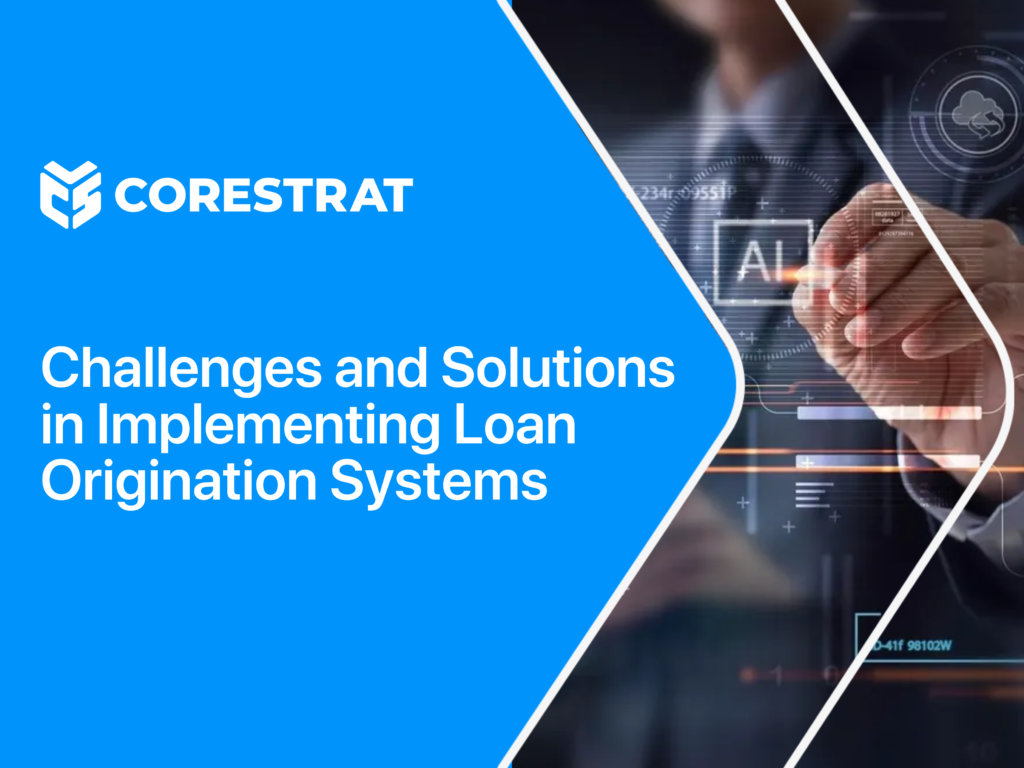To meet the growing demand for better credit lending experiences, implementing a digital loan origination system has become imperative for lending institutions. This system is vital in streamlining the lending process, making it more efficient and customer-centric. Lending institutions implementing loan origination systems can expedite their lending process while being less error-prone and improving operational efficiency.
Studies have shown that automating the lending process can yield substantial benefits, including a reduction in cycle time by as much as 30 to 40%, while simultaneously boosting productivity. With its numerous benefits, investing in a loan origination system for your lending institution is a logical choice. However, certain considerations must be taken into account before implementation. In this blog, we’ll delve into the major challenges faced and explore solutions to overcome them when integrating a loan origination system into your lending operations.
Challenges in Implementing Loan Origination System:
Integration with Legacy Systems
Many lending institutions operate on legacy systems that may not be compatible with modern LOS solutions. Integrating a loan origination system with existing systems can be complex and time-consuming, leading to delays and increased costs. Legacy systems may lack the necessary APIs or data standards required for seamless integration.
Data Security and Compliance
In 2019, Capital One experienced a server breach wherein data pertaining to 100 million credit card applications dating back to 2005 was compromised. Therefore data security and compliance are paramount in the lending industry, especially when dealing with sensitive borrower information. Implementing a loan origination system requires compliance with regulatory requirements such as GDPR, CCPA, and any other regulations that maintain the integrity of the data. Ensuring data security while maintaining regulatory compliance adds complexity to the implementation process.
Loan Origination System: Scalability and Flexibility
Lending institutions vary in size and have diverse operational requirements, necessitating LOS solutions that are scalable and flexible. Implementing a one-size-fits-all loan origination system usually does not cater to the specific needs of individual institutions, leading to inefficiencies and operational constraints. Scalability and flexibility are essential considerations during the selection and implementation of a LOS.
Training and Adoption
Effective training and user adoption are critical for the successful implementation of LOS. Users need to be trained on how to use the system effectively to maximise its benefits. Inadequate training can lead to user errors, decreased productivity, and frustration among employees. Ensuring widespread adoption requires comprehensive training programs and ongoing support.
Solutions to Overcome Adoption Hurdles
Modular Approach to Integration
Instead of attempting to overhaul existing systems entirely, a modular approach to integration can be a more pragmatic solution. Identify key areas where LOS can complement existing systems and prioritise integration efforts accordingly. This approach minimises disruption and allows for incremental improvements over time.
Robust Security Measures : Loan Origination System:
Implementing robust security measures to protect sensitive borrower information and ensuring compliance with regulatory requirements are two fundamental aspects of web application development today. Data encryption both in transit and at rest, as well as implementing multi-factor authentication and regularly auditing system access logs should be built into the key objectives of developing any smart platform with LOS capabilities.
Customisation and Configuration
Choose a LOS that offers customisation and configuration options to cater to the unique needs of your institution. Work closely with vendors to tailor the system to your specific requirements, ensuring scalability and flexibility. Regularly review and update configurations as your institution grows and evolves.
Comprehensive Training Programs
Choose a LOS that develops comprehensive training programs to equip users with the knowledge and skills required to effectively utilise the LOS. LOS providers must also offer hands-on training sessions, online tutorials, and user manuals to support different learning styles. They should also provide ongoing support and encourage feedback to address any issues or challenges encountered during the adoption process.
Conclusion
Implementing loan origination systems presents both challenges and opportunities for financial institutions. By addressing adoption hurdles proactively and implementing effective solutions, institutions can streamline their lending processes, improve efficiency, and enhance the overall borrower experience. With careful planning, collaboration, and investment in training and technology, financial institutions can overcome the challenges of LOS implementation and position themselves for long-term success in a rapidly evolving industry.
Corestrat’s Digital Lending Automation (DLA) stands out as a user-friendly loan origination System, offering seamless integration for lenders. With flexible APIs, lenders can effortlessly incorporate DLA into their existing systems, while users find its interface intuitive and easy to navigate. You can customise DLA as per the requirements of your institution, thereby having a powerful, fully digital end-to-end LOS for enhancing your borrower’s experience.



